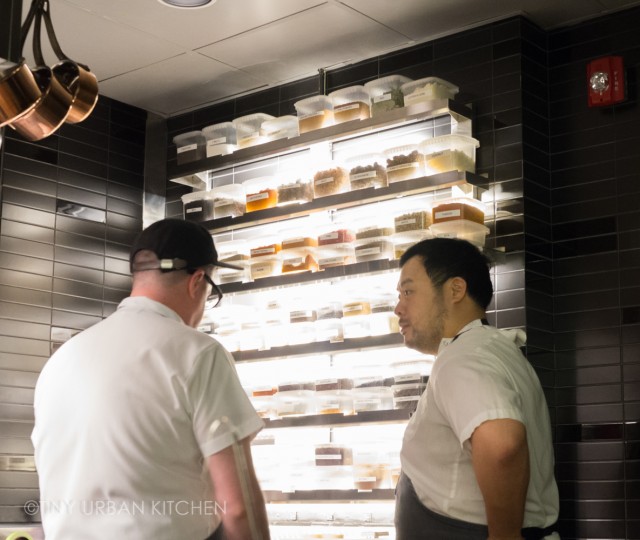
This is the third and final post in the 2015 New York series. Other posts in this series include Marta New York and Xi'an Famous Foods.
For years, it was not that easy to know what the food at Momofuku Ko, one of David Chang's flagship restaurants, really looked like. While the rest of the food world went gaga posting their restaurant photos onto social media, Momofuku diners were denied such a privilege. No food photos were allowed.
In order to experience the exclusive menu, you had to go and taste it yourself. None of this vicarious-eating through other people.
I visited that original Momofuku Ko back in 2011. The space and ambiance felt more like a casual ramen bar than a high-end restaurant serving a $100+ tasting menu full of innovation and creative flavors.
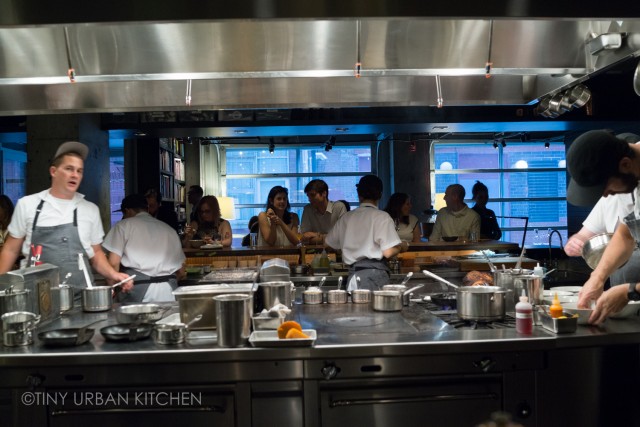
Despite the casual environment, people flocked to get a taste of David Chang's edgy and unique dishes. Landing a reservation involved setting up an account on the Momofuku website, sitting at the computer right when new reservations opened (10AM), and grabbing the first available seat immediately.
The hype surrounding David Chang's restaurants has not really subsided. However, he has finally expanded Momofuku Ko so that it fits a lot more people in a much more comfortable space.
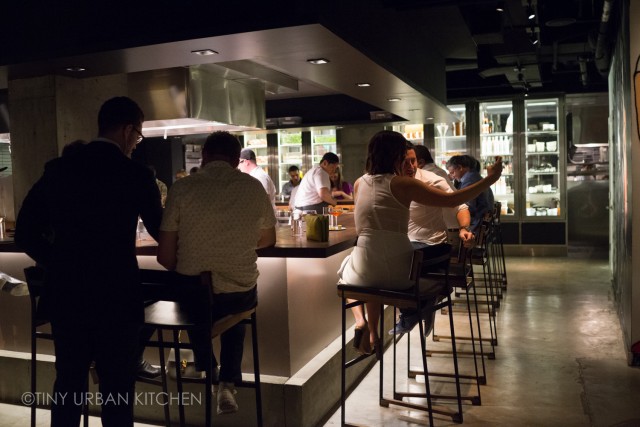
It's still counter-style seating. Now, however, the counter has expanded into a U-shape that wraps around the entire kitchen. There are also a few tables for larger parties (which you can reserve beforehand). Near the entrance, there is an actual bar where you can grab seats without a reservation and order drinks plus a few a la carte items.
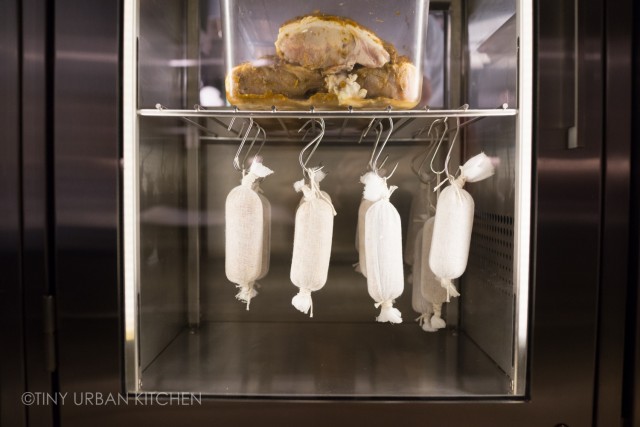
The restaurant is surrounded by floor to ceiling refrigerators filled with various things that are curing, aging, or just being stored. It's fun to go around and just explore everything that's behind those see-through doors.
For diners in the main central area, there is just one tasting menu: a 20+ course meal for $195 (was $175 in 2015). Courses change frequently, and the menu changes everyday.
Here's a look at our meal!
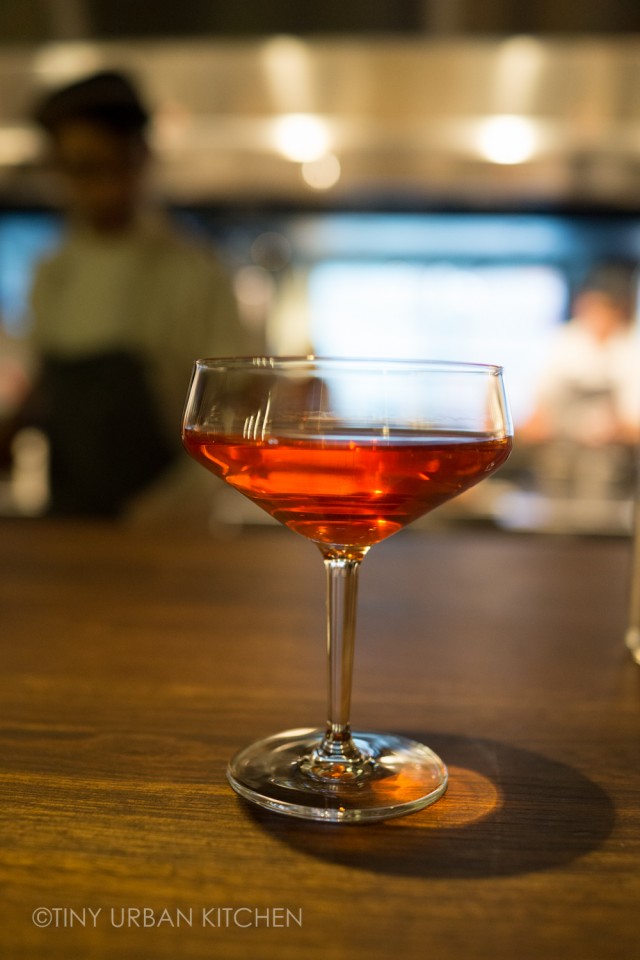
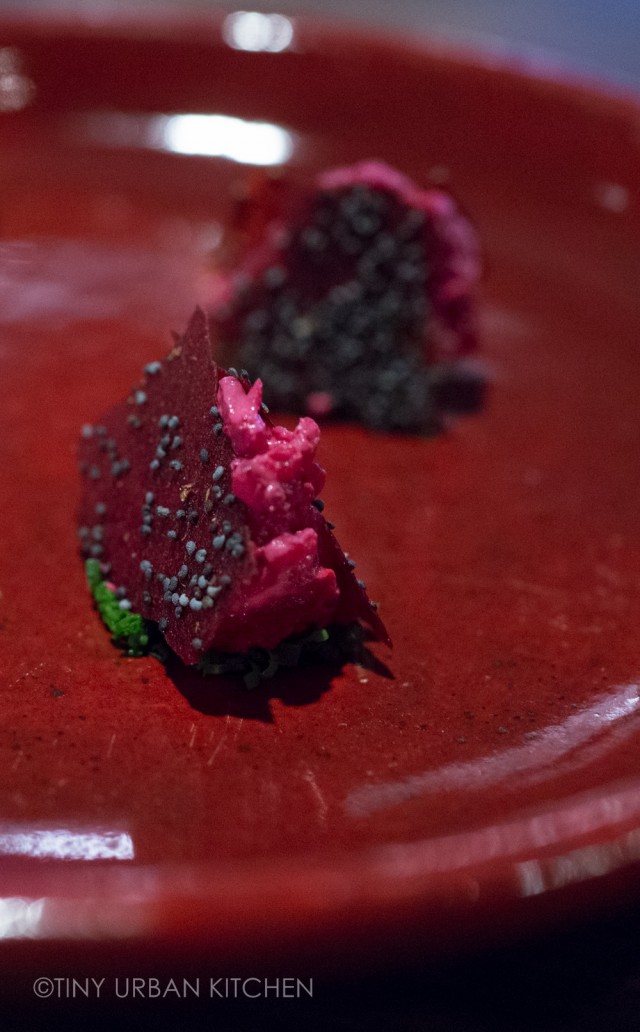
We started with a delicate beet tuile topped with poppy seeds and served with goat cheese. These two flavors are classic together, and the introductory bite was enjoyable but wasn't particularly unique in flavor. This was paired with an aperitif made from verjus, cappelletti, and sparkling water.
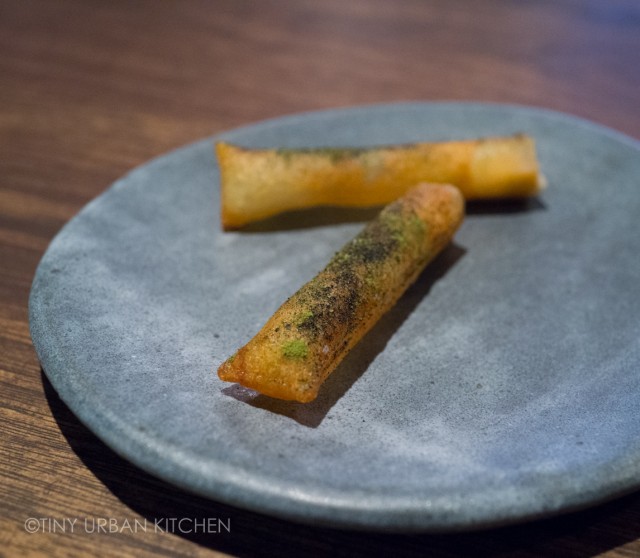
The next course, Pomme Soufflé, reminded me of a puffed up potato chip filled with pimento cheese and brushed with seaweed powder, sort of like an elevated version of chips and dip. It was a classic snack flavor food combination served in an upscale, creative form.
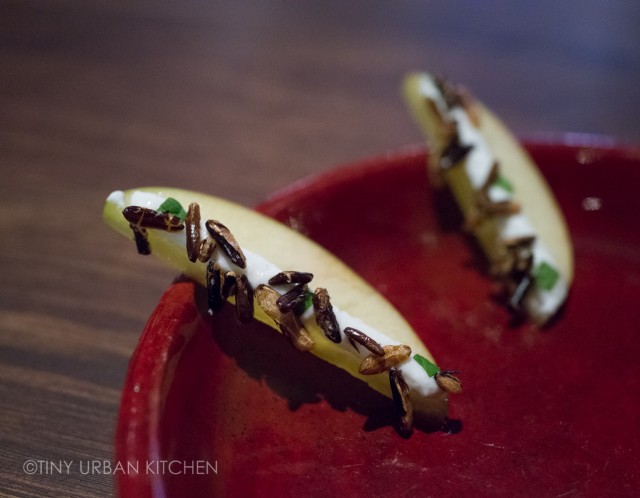
I loved the complexity of the third course, a yuzu compressed apple served with crispy black rice and a very light, whipped horseradish cream. I especially enjoyed the brightness that came from the floral and citrus-like yuzu. The black rice added a nice, crispy crunch.
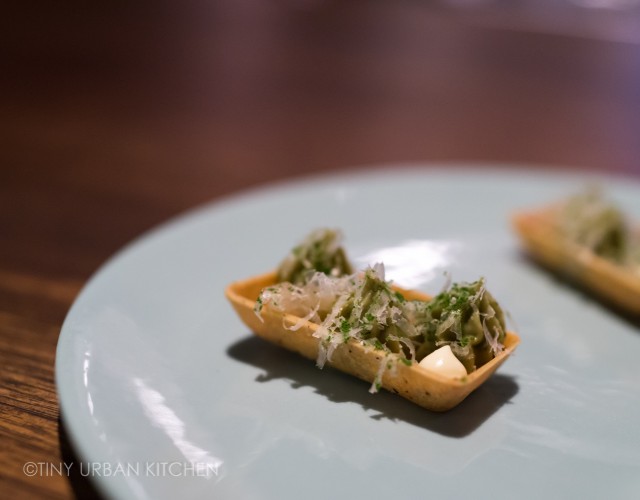
The fourth course, "Lobster Roll" was exquisitely presented. A tiny, delicate pastry "box" came filled with lobster, a creamy light green sauce, and cheese. It was a lovely bite with elegant flavors.
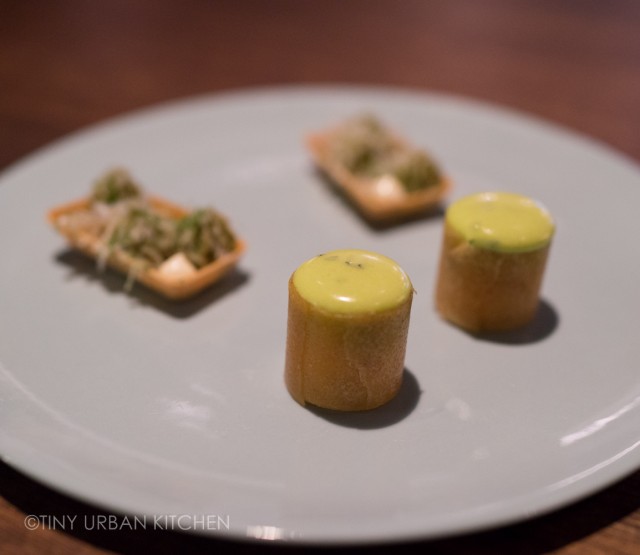
Alongside the lobster roll came an artichoke and spinach olive oil tart with Parmesan. It was a crispy, delicate bite with an intense and flavorful burst of flavors inside.
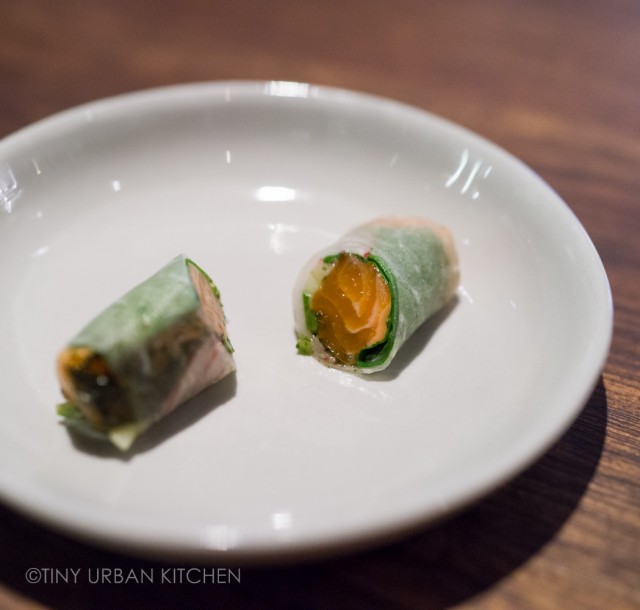
Next, we tried what looked like a mini Vietnamese spring roll, but was actually arctic char cured with pickled jalapeño. The cured char came wrapped in Thai basil and super thinly sliced daikon "wrappers". The overall bite was a lovely blend of flavors, and thankfully wasn't too spicy despite the jalapeño.
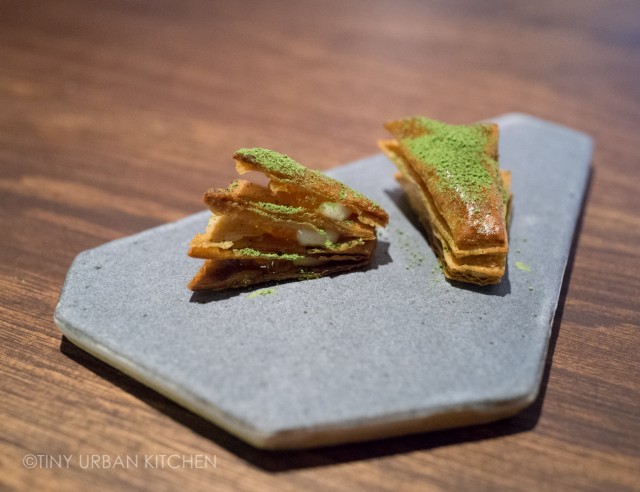
This next course consisted of layers of rye pastry filled with layers of Bearnaise (cheese w/ bechamel sauce), green tea powder, and trout roe. The pastry was very flaky and the overall bite was quite salty, with the roe dominating. David Chang is generally aggressive with salt, thinking that it's better to push the edge of over-salting versus under-seasoning something.
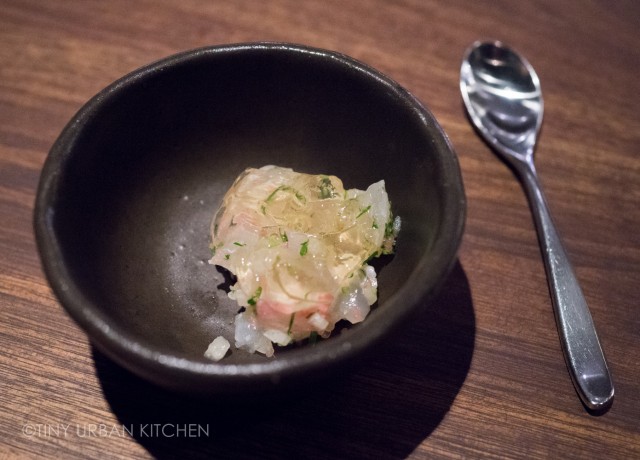
I loved this next course,which consisted of Madai (sea bream) served with cucumber, a gelatin made from clarified fish bone stock, and a shiso mist. The fish bone gelatin was nice and light, yet still really flavorful. I thought the crunch of the cucumbers added a nice contrast to the soft texture of all the other components.
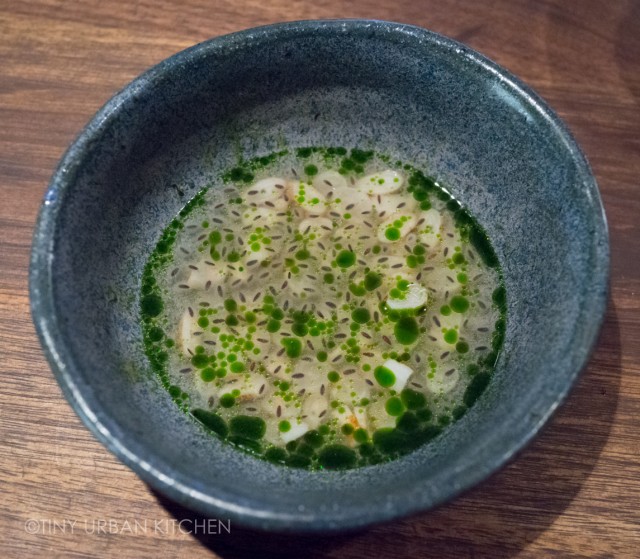
Our next course consisted of chopped up razor clams served in a clam-based stock brightened with pineapple jus and topped with basil seeds and tiny dots of bright green basil oil. The clam stock was rich and flavorful yet was almost dominated by the pineapple jus. In my mind, it was right at the edge. Any more pineapple would have been way too much.
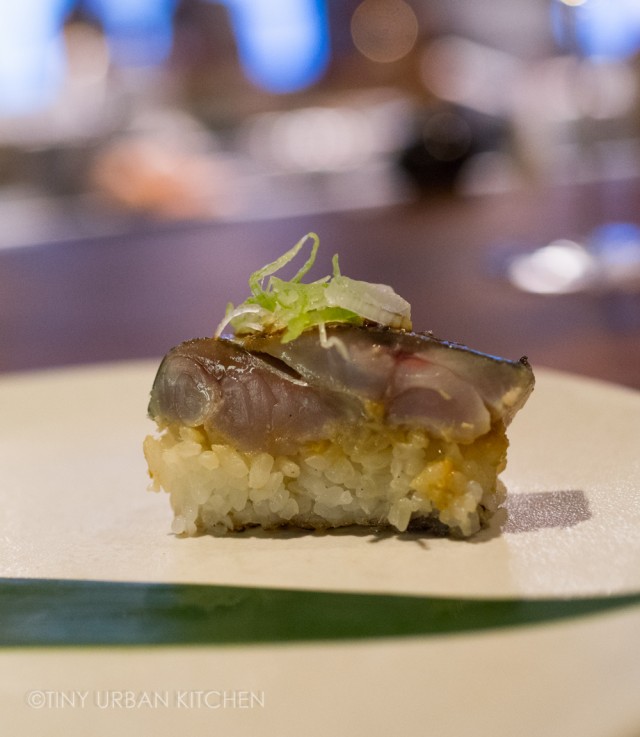
The next course was a "nigiri" made from grilled Boston mackerel and fermented sunflower seed paste. Other classic components, like rice, ginger, and scallions completed the bite. Ginger was the dominant flavor, and I did not taste a strong note of sunflower seeds.

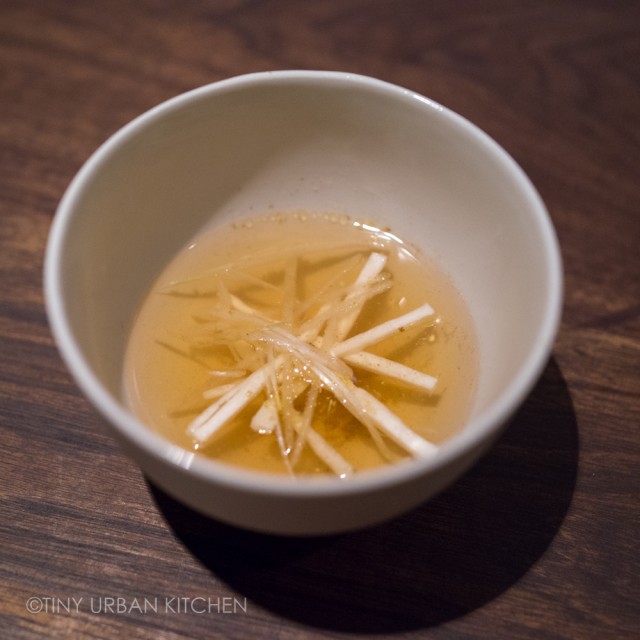
The next course reminded me of a classic Japanese kaiseki: they served us a "tea" made from a stock comprising of ingredients from other courses in the tasting. This flavorful, clean broth was made from bones of mackerel (see previous course!) poured over king oyster mushrooms and strips of a daikon-like sweet root vegetable.
The rich fish-flavored broth was warm, nourishing, and restorative.
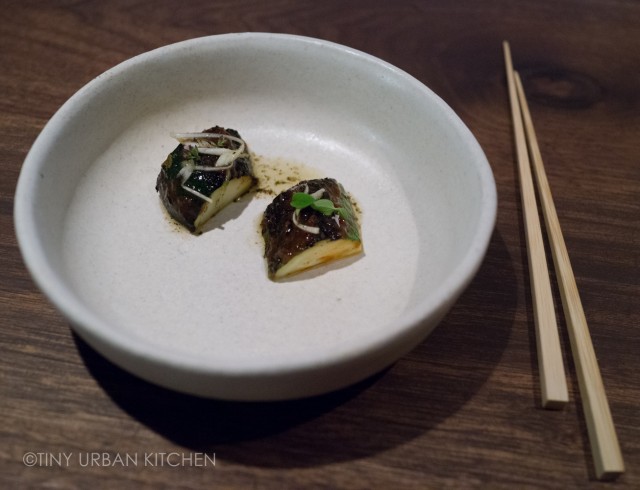
Our next course was summer squash grilled with browned butter and oregano. I thought I tasted ginger (perhaps those are ginger shoots on top)? The squash was aggressively salted, but I felt it worked, reminding me of grilled street food. Bryan thought that the pairing with Jolly pumpkin golden ale worked especially well.
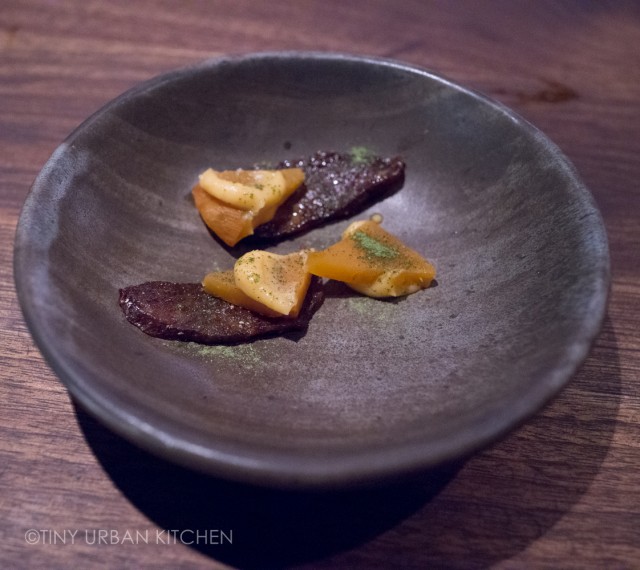
The next course was house-made beef jerky served with rutabaga that had been cooked all day and topped with a Japanese powder. The flavor of the jerky was sweet, reminding me of Chinese sausage or Chinese pork jerky. The slow-simmered rutabaga was very soft, which worked in this dish. Pairing: a biodynamic pinot meunier champagne.
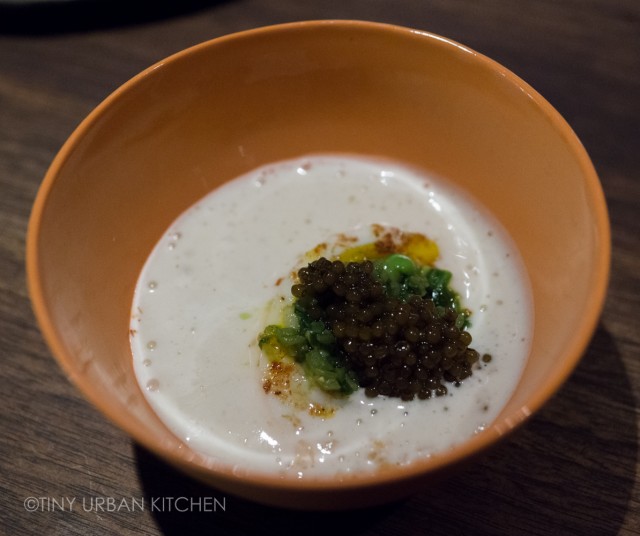
It's hard not to love this next dish. A new interpretation of an old classic, whipped, creamy potato foam came with topped with potato chips, caviar, a soft boiled egg, chopped snap peas, and radish butter. I loved the crunch of chips, and the entire bite of caviar, eggs, and potato cream all mixed together with some cruncny snap peas and radish butter was delicious. This was paired with a 2004 Dom Perignon (champagne).
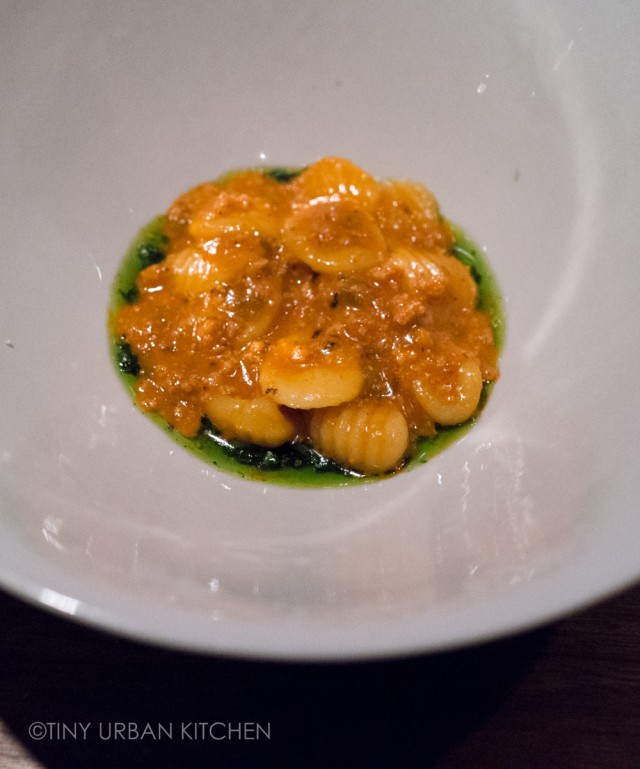
We were extremely impressed with the next course, an orreciette mixed with a rich chili and pepper ragu served on top of a bright green pesto. The pasta was super chewy and al dente, which we loved. The sauce was very well seasoned, with a nice kick from the chilies and a good amount of salt to really bring out the flavors.
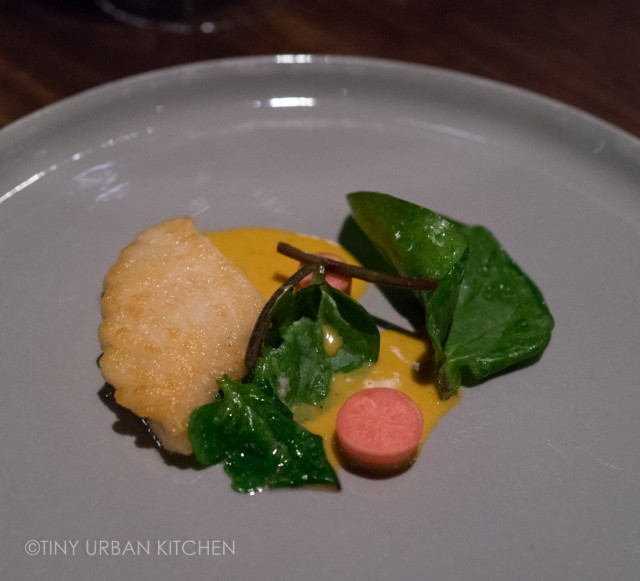
The next course was a pan-seared skate wing served with wild spinach,pickled radish, and an uni sauce. The uni flavor in the sauce was mild but present. Overall I enjoyed the flavors, but I struggled with the texture of the uni sauce. It reminded me of raw egg whites or okra, which was a bit strange for me. The wild spinach had a more intense flavor than normal spinach, reminding me a bit of a cross between chard and spinach.
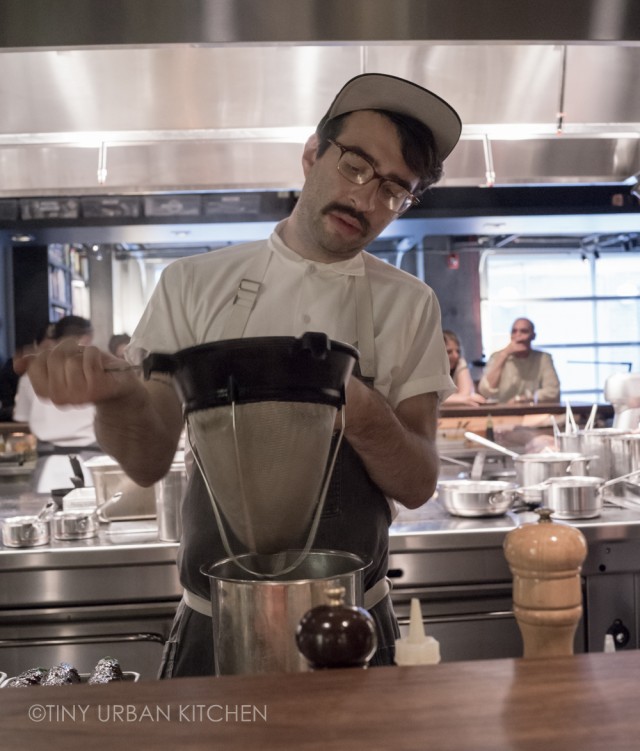
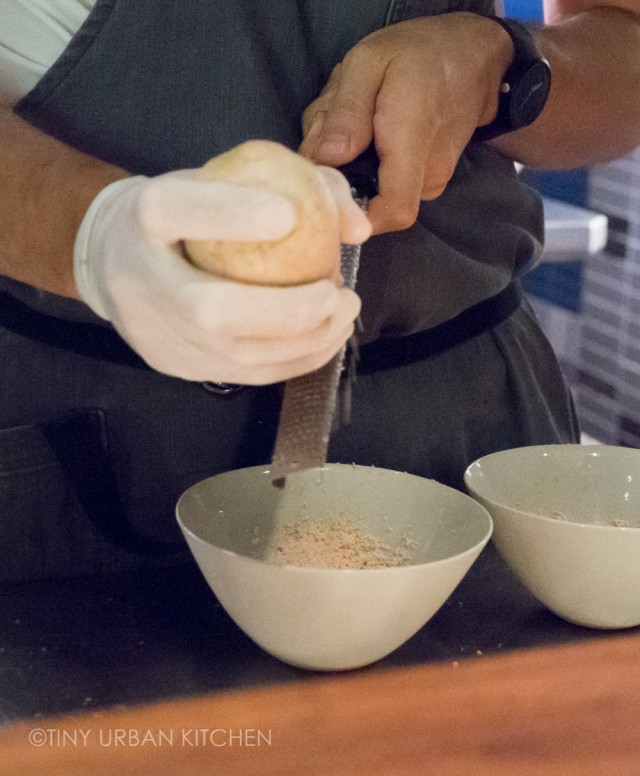
I was thrilled to see that David Chang chose to keep his classic, signature dish on the new tasting menu. I remember fondly the now-famous dish of pine nut brittle, riesling gelee, and lychee chunks topped with a mountain of fluffy shaved frozen fois gras.
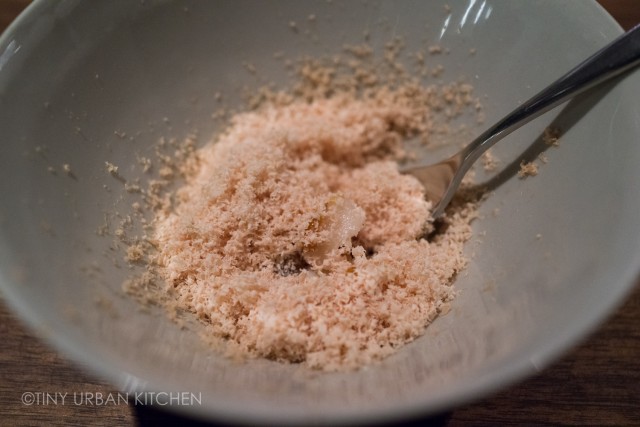
The dish was just as good as I remembered. With each bite, the fluffy foie gras melts in your mouth together with the lychee, riesling gelee, and crunchy pine nut brittle.
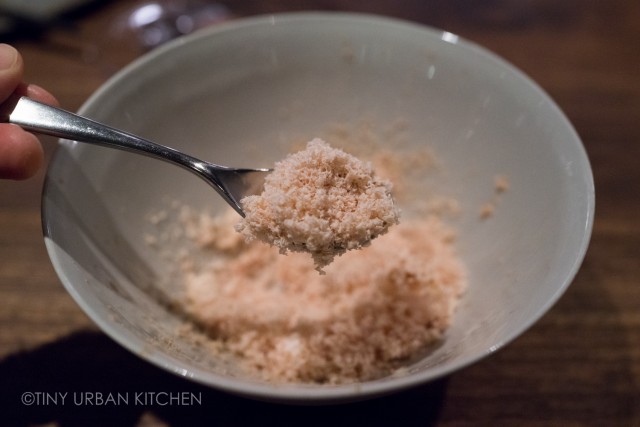
The bite is more dessert than savory course, and serves as a nice prelude to the sweeter desserts to come.
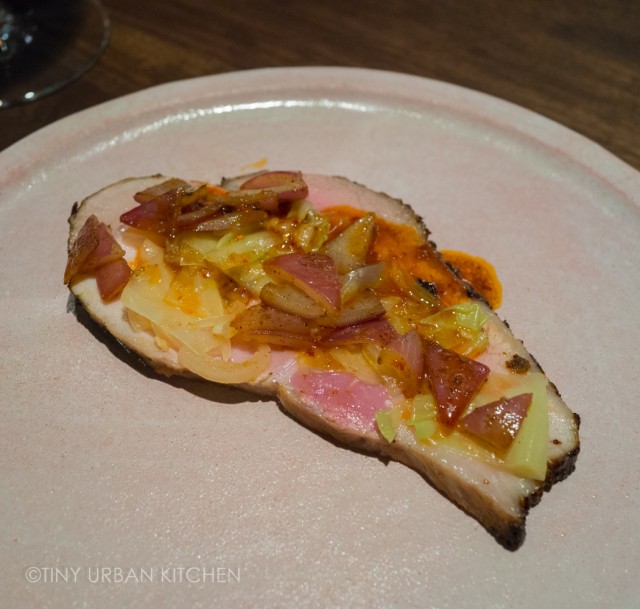
The last savory course was a slice of heritage pork loin topped with kim chi, cabbage, and potato. The accompanying sauce was quite spicy, giving the overall dish yet another level of complexity and flavor. The pork was perfectly cooked, tender, medium rare, with nice amounts of fat.
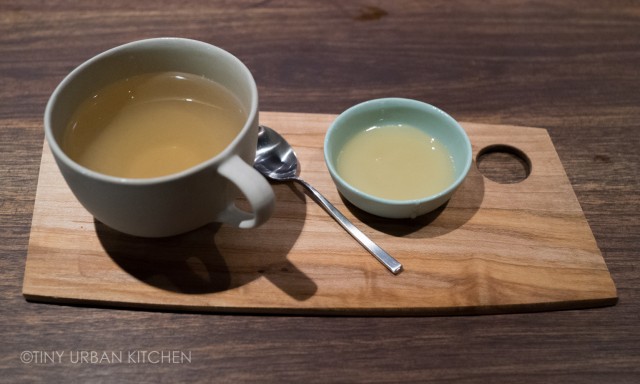
As a palate cleanser, they served us a shiso and rye roasted barley tea, which was phenomenal. I loved the depth of flavor that came from the roasted barley, and the shiso added a nice, herbal overtone.
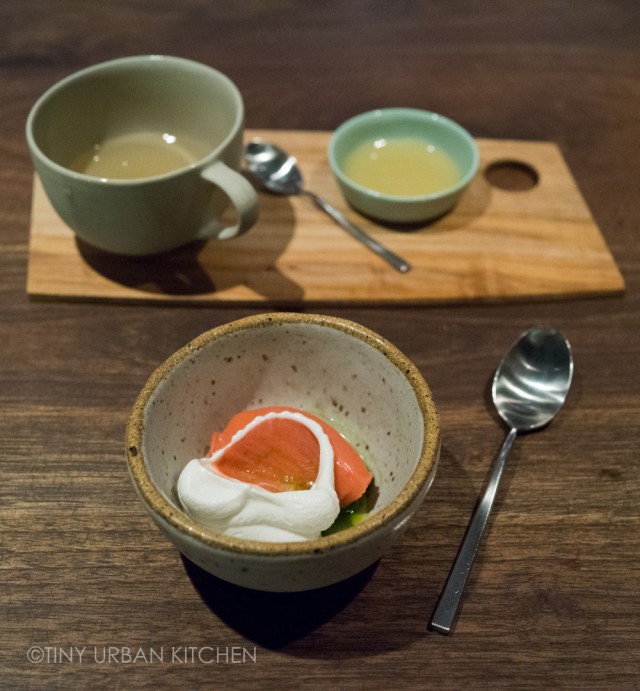
This came with a strawberry sorbet mixed with a chamomile meringue-like cream served over a sorrel flavored oil. It was a nice balance of fruity, floral, and herbal notes. I enjoyed the mix of the two temperatures: the ice-cold sorbet and the room-temperature cream.
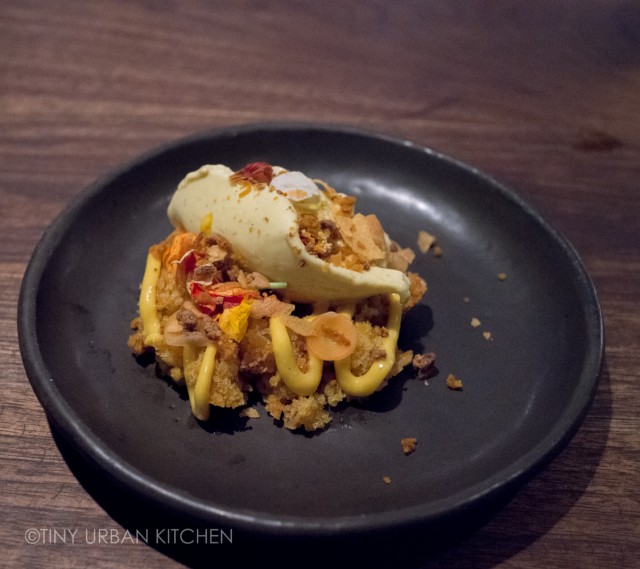
Next was a carrot cake served with a spicy floral ice cream, crunchy cereal, and caramelized white chocolate. We really enjoyed the thick, chewy texture of the ice cream. Other elements added fun and interesting textures to the dish, such as carrot shavings, crispy sugar corners, and a crunch from the bits of cereal scattered throughout.
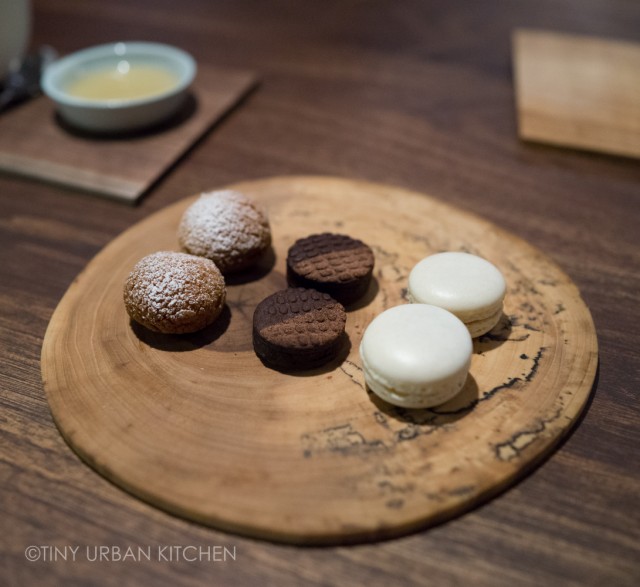
Finally, a few mignardises: a choux creme (cream puff) with pineapple and coconut (my favorite!), a macaron with almond cream in the center, and a Fernet Branca and chocolate cookie.
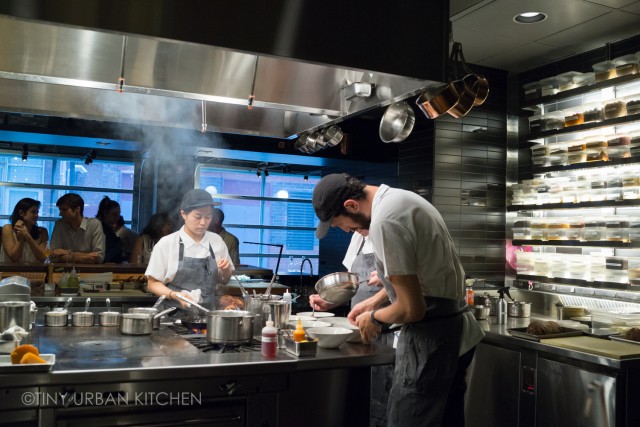
All in all, it was an excellent meal. Out of the 20+ courses/bites, virtually all were very enjoyable, with several that were outstanding. For those sensitive to salt, do keep in mind a few dishes will likely be on the borderline saltier side. All in all, though, creativity abounds and it's fun to sample a wide variety of culinary ideas spanning such a large range of flavors and textures.
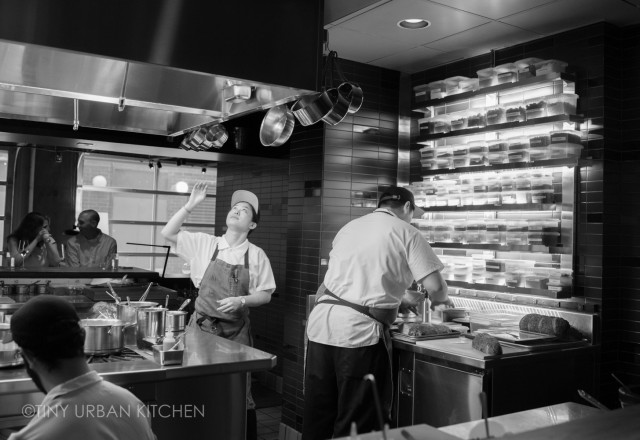
'The amount of work that goes into each of these 20+ diverse courses is not minimal. With front-seats views of the chefs prepping your courses all night, you gain a deeper appreciation for the labor of love that goes into each component of each dish.
Highly recommended.
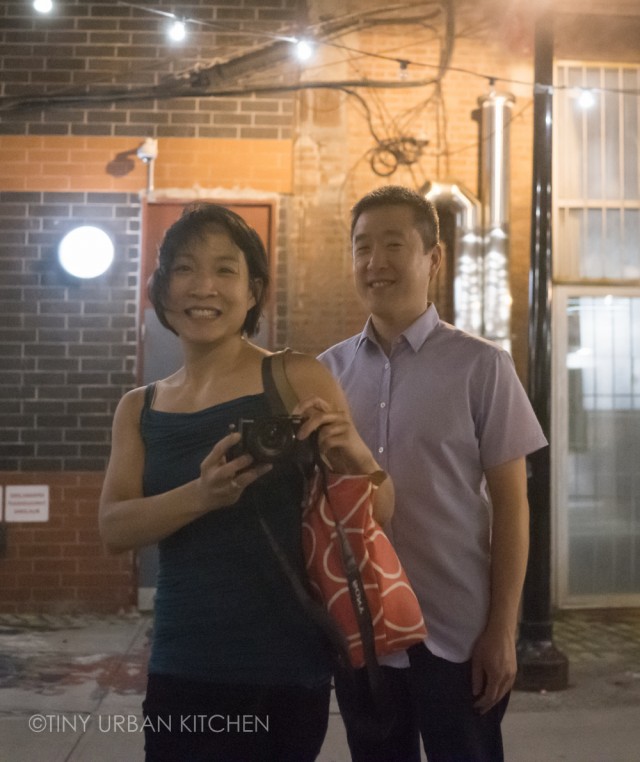
Standing outside the door of Momofuku Ko in a brick-lined alleyway

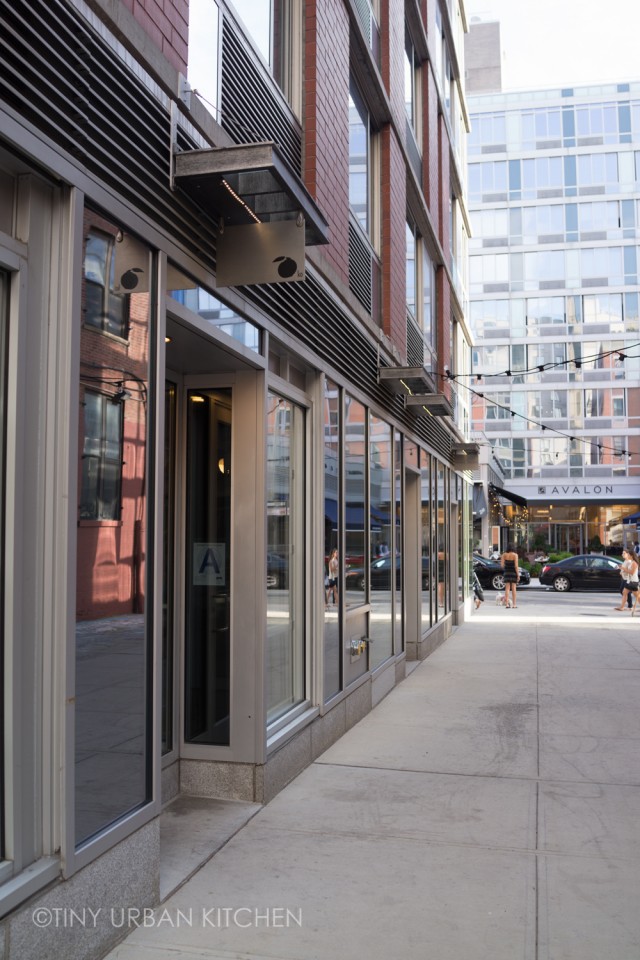
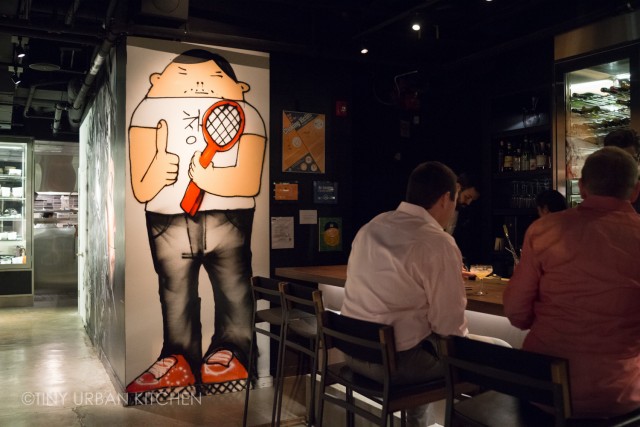
Momofuku Ko
8 Extra Place (East First Street)
East Village
New York City









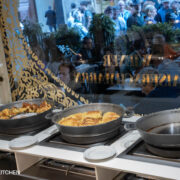
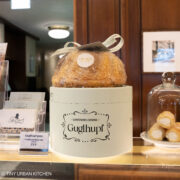
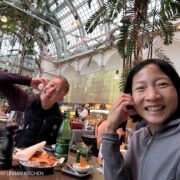
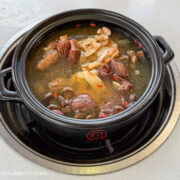
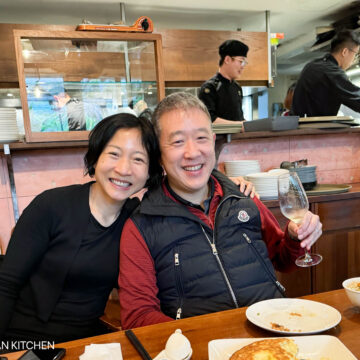
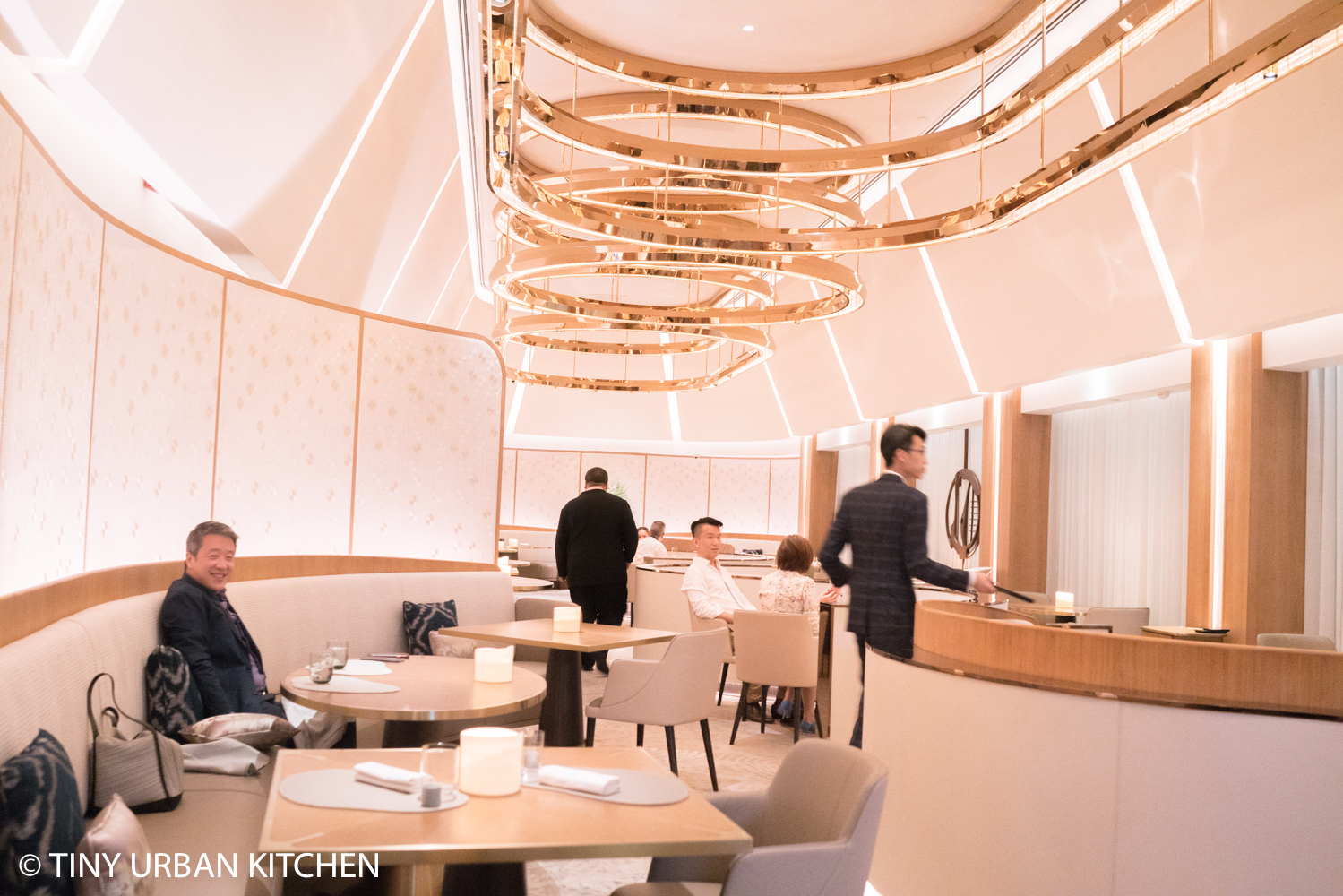
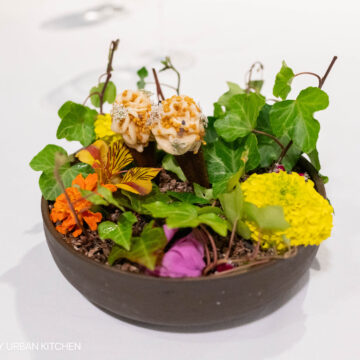
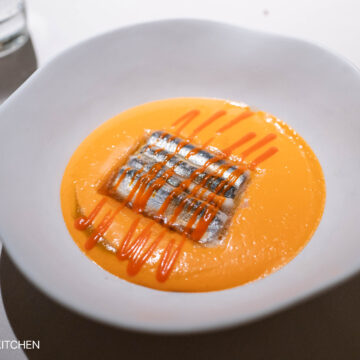
[…] https://tinyurbankitchen.com/momofuku-ko-2/ […]